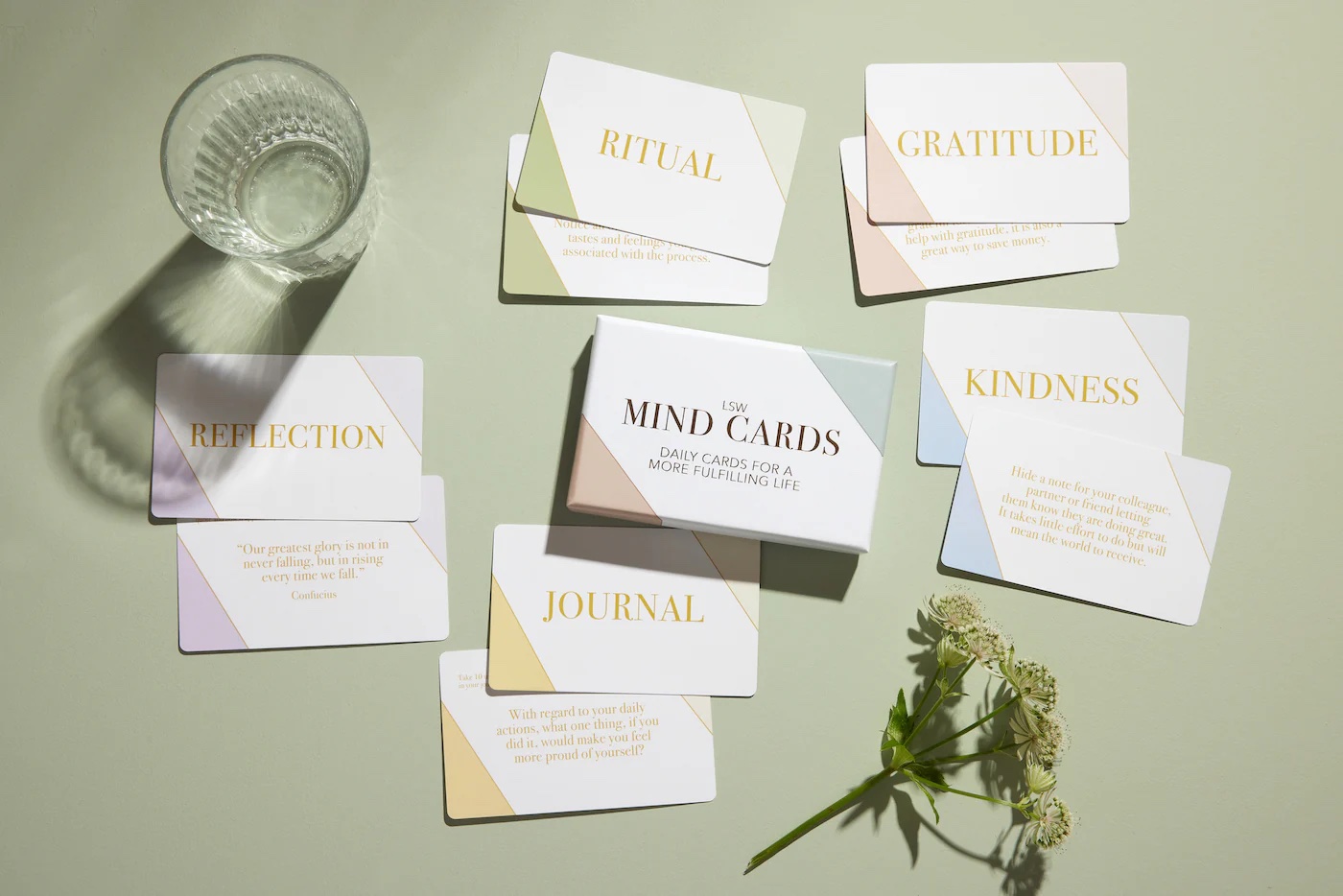As the days grow shorter and the temperatures drop, many of us may feel our mood dip along with the sun. Winter can significantly affect serotonin levels, the neurotransmitter responsible for regulating mood, happiness, and emotional well-being. Below we’ll provide you with practical tips to boost your serotonin levels while also enhancing your overall happiness during the winter months.
What is Serotonin?
Serotonin is a key neurotransmitter that plays a vital role in mood regulation. It helps to stabilise mood, feelings of well-being, and happiness. Low serotonin levels are linked to various mental health issues, including depression, anxiety, fatigue, and irritability.
Seasonal Affective Disorder (SAD)
For some, winter brings more than just chilly weather. Seasonal Affective Disorder (SAD) is a type of depression that occurs at certain times of the year, often in winter. Symptoms can include persistent sadness, loss of interest in activities, changes in sleep patterns, and difficulty concentrating. Understanding serotonin’s role can help you find effective ways to cope.
Increase Sunlight Exposure
To boost serotonin levels during winter, it’s essential to increase your exposure to sunlight. Natural sunlight is known to enhance serotonin production. Make a point to spend time outdoors during daylight hours, even if it’s cloudy. On particularly dreary days, consider using a light therapy lamp for about 20-30 minutes each morning. These lamps mimic natural sunlight and can be especially beneficial for those who find it hard to get outside during the winter months.
Practice Mindfulness and Meditation
Practising mindfulness and meditation can significantly enhance your mental health during winter. Mindfulness practices, including meditation and deep-breathing exercises, can reduce stress and promote feelings of well-being. Start with just a few minutes each day to cultivate a peaceful mindset.
Incorporate Regular Exercise
Incorporating regular exercise into your routine can also be a powerful mood booster. Physical activity increases the production of serotonin and other feel-good hormones. Aim for at least 30 minutes of exercise most days of the week. Activities such as brisk walking, yoga, and dancing can elevate serotonin levels significantly. If you struggle to find motivation during the colder months, consider joining a local gym or group class to help keep you accountable.
Focus on Diet
Diet plays a crucial role in serotonin production as well. Certain foods can help support this neurotransmitter’s levels. Incorporate foods rich in tryptophan, such as turkey, eggs, nuts, and seeds. Omega-3 fatty acids found in salmon and flaxseeds are also beneficial. Complex carbohydrates, like whole grains and fruits, help facilitate serotonin synthesis, making them excellent additions to your winter diet. Try out comforting recipes that feature these ingredients, such as a hearty porridge topped with nuts and berries or a warm bowl of quinoa with vegetables.
Consider Supplements (with Caution)
If you’re struggling with low serotonin levels, some supplements may provide additional support. Vitamin D, omega-3 fatty acids, and probiotics have been shown to help improve mood. However, it’s essential to consult a healthcare provider before starting any new supplement to ensure it’s appropriate for you.
Stay Socially Connected
Maintaining social connections is vital for mental well-being during winter. Organising gatherings with friends or family, whether it’s a cosy dinner party or a virtual game night, helps to strengthen relationships and lift spirits. Strengthening your “hostess game” can make these gatherings even more enjoyable. Plan themed nights, cook together or host a potluck where everyone brings a dish to share.


This plum cake is a perfect dessert for autumn and winter gatherings. Naturally sweetened with applesauce and maple syrup, it brings out the warm, rich flavours of ripe plums without added sugar. Moist, comforting, and subtly spiced, this cake is ideal for sharing with friends and family around the table. Not only does it satisfy sweet cravings, but it also offers a wholesome twist on a classic treat.
Ingredients:
- Dry Ingredients:
- 1 cup almond flour
- 1/2 cup whole wheat flour or oat flour
- 1 tsp baking powder
- 1/2 tsp baking soda
- 1/4 tsp salt
- 1/2 tsp cinnamon (optional, for a warm flavor)
- Wet Ingredients:
- 2 large eggs (or flax eggs for vegan version)
- 1/3 cup unsweetened applesauce (for natural sweetness and moisture)
- 1/4 cup melted coconut oil or olive oil
- 1 tsp vanilla extract
- Zest of 1 lemon or orange (optional for a citrusy aroma)
- Natural Sweetener:
- 1/4 cup pure maple syrup or honey (skip honey for a vegan version)
- Plums:
- 4-5 ripe plums, halved and pitted (cut into quarters if large)
Instructions:
- Prepare the Oven and Pan:
- Preheat your oven to 350°F (175°C).
- Line an 8-inch (20 cm) round cake pan with parchment paper or grease it lightly with oil.
- Mix Dry Ingredients:
- In a medium bowl, combine almond flour, whole wheat or oat flour, baking powder, baking soda, salt, and cinnamon.
- Mix Wet Ingredients:
- In another bowl, whisk together eggs (or flax eggs), applesauce, melted coconut oil, vanilla extract, and lemon/orange zest.
- Combine Wet and Dry Ingredients:
- Pour the wet mixture into the dry mixture, stirring until just combined. Do not overmix, as this can make the cake dense.
- Add Natural Sweetener:
- Fold in the maple syrup or honey until it’s well incorporated into the batter.
- Assemble the Cake:
- Pour the batter into the prepared cake pan, spreading it evenly. Arrange the plum halves (or quarters) on top, pressing them gently into the batter.
- Bake:
- Bake for 30-35 minutes, or until a toothpick inserted in the center comes out clean and the cake is golden brown on top.
- Cool and Serve:
- Allow the cake to cool in the pan for 10-15 minutes before transferring it to a wire rack.
Plan Future Activities
In addition to health-related strategies, incorporating lifestyle tips can greatly enhance your happiness during the winter months. One effective way to boost your mood is to plan future activities that you can look forward to. Booking a holiday can create excitement and anticipation, giving you something positive to focus on as the colder months drag on. Whether it’s a tropical escape or a cosy cabin retreat, having plans can significantly boost your mood. Similarly, setting personal goals for the winter months, such as starting a new hobby or learning a new skill, can provide motivation and a sense of purpose.
Create a Cosy Atmosphere
Creating a cosy atmosphere in your home is another simple yet effective way to enhance your winter experience. Transform your living space into a welcoming haven by using warm lighting, soft blankets, and scented candles. This cosy environment invites relaxation and comfort during long winter evenings. Host movie nights or cosy reading sessions with friends or family to make the most of your time indoors, and consider trying themed gatherings or potlucks to encourage participation.
Engage in Creative Activities
Engaging in creative activities can also provide a much-needed boost to your mood. Hobbies such as painting, crafting, or cooking can serve as excellent outlets for self-expression and joy. Experimenting with new recipes or DIY projects can spark creativity and provide a sense of accomplishment. Joining a local class or online community centred around a creative interest can foster a sense of connection and support during the winter months. Create Academy have some wonderful online arts and crafts courses where you can learn anything from botanical painting, upholstery, floristry and even how to make your very own hand-sewn lampshades.
Explore Nature
Exploring nature is another fantastic way to combat the winter blues. Even in winter, nature can be refreshing and invigorating. Bundle up and take winter walks or hikes to appreciate the beauty of the season. Look for local parks or nature reserves that offer winter activities, such as snowshoeing or ice skating, to stay active and enjoy the outdoors.
Volunteer
Lastly, consider the positive impact of volunteering. Helping others can significantly boost your mood and provide a sense of purpose. Look for opportunities to volunteer at local charities or community organisations. Engaging in acts of kindness not only benefits those in need but also enhances your own sense of fulfilment and happiness.
If you find that low serotonin levels persist despite trying various strategies, it might be time to seek professional help. Talking to a mental health professional can provide additional support and strategies tailored to your needs.






